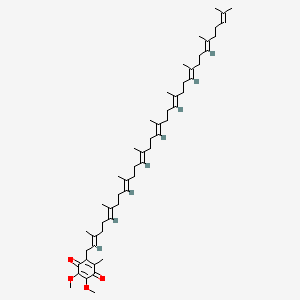| Authors | Title | Published | Journal | PubMed Link |
|---|---|---|---|---|
| Frasson D et al. | Pseudomonas wadenswilerensis sp. nov. and Pseudomonas reidholzensis sp. nov., two novel species within the Pseudomonas putida group isolated from forest soil. | 2017 | Int. J. Syst. Evol. Microbiol. | pmid:28820109 |
| Drobish AM et al. | Oblitimonas alkaliphila gen. nov., sp. nov., in the family Pseudomonadaceae, recovered from a historical collection of previously unidentified clinical strains. | 2016 | Int. J. Syst. Evol. Microbiol. | pmid:27169721 |
| Danhauser K et al. | Fatal neonatal encephalopathy and lactic acidosis caused by a homozygous loss-of-function variant in COQ9. | 2016 | Eur. J. Hum. Genet. | pmid:26081641 |
| Ohta Y et al. | Effect of Dietary Vitamin E Supplementation on Liver Oxidative Damage in Rats with Water-Immersion Restraint Stress. | 2015 | J. Nutr. Sci. Vitaminol. | pmid:26052141 |
| de Boer R et al. | Caenorhabditis elegans as a Model System for Studying Drug Induced Mitochondrial Toxicity. | 2015 | PLoS ONE | pmid:25970180 |
| Luna-Sánchez M et al. | The clinical heterogeneity of coenzyme Q10 deficiency results from genotypic differences in the Coq9 gene. | 2015 | EMBO Mol Med | pmid:25802402 |
| Amouric A et al. | Halomonas olivaria sp. nov., a moderately halophilic bacterium isolated from olive-processing effluents. | 2014 | Int. J. Syst. Evol. Microbiol. | pmid:24030688 |
| Tao Y et al. | Pseudomonas chengduensis sp. nov., isolated from landfill leachate. | 2014 | Int. J. Syst. Evol. Microbiol. | pmid:24021726 |
| Jiang J et al. | Halomonas songnenensis sp. nov., a moderately halophilic bacterium isolated from saline and alkaline soils. | 2014 | Int. J. Syst. Evol. Microbiol. | pmid:24510978 |
| Miao C et al. | Halomonas huangheensis sp. nov., a moderately halophilic bacterium isolated from a saline-alkali soil. | 2014 | Int. J. Syst. Evol. Microbiol. | pmid:24425813 |
Coenzyme Q9
Coenzyme q9 is a lipid of Prenol Lipids (PR) class. The involved functions are known as Diastasis, Phosphorylation and Cardiac function.
Cross Reference
Introduction
To understand associated biological information of Coenzyme Q9, we collected biological information of abnormalities, associated pathways, cellular/molecular locations, biological functions, related genes/proteins, lipids and common seen animal/experimental models with organized paragraphs from literatures.
What diseases are associated with Coenzyme Q9?
There are no associated biomedical information in the current reference collection.
No disease MeSH terms mapped to the current reference collection.
PubChem Associated disorders and diseases
What pathways are associated with Coenzyme Q9
There are no associated biomedical information in the current reference collection.
PubChem Biomolecular Interactions and Pathways
Link to PubChem Biomolecular Interactions and PathwaysWhat cellular locations are associated with Coenzyme Q9?
There are no associated biomedical information in the current reference collection.
What functions are associated with Coenzyme Q9?
Related references are published most in these journals:
| Function | Cross reference | Weighted score | Related literatures |
|---|
What lipids are associated with Coenzyme Q9?
There are no associated biomedical information in the current reference collection.
What genes are associated with Coenzyme Q9?
There are no associated biomedical information in the current reference collection.
What common seen animal models are associated with Coenzyme Q9?
There are no associated biomedical information in the current reference collection.
